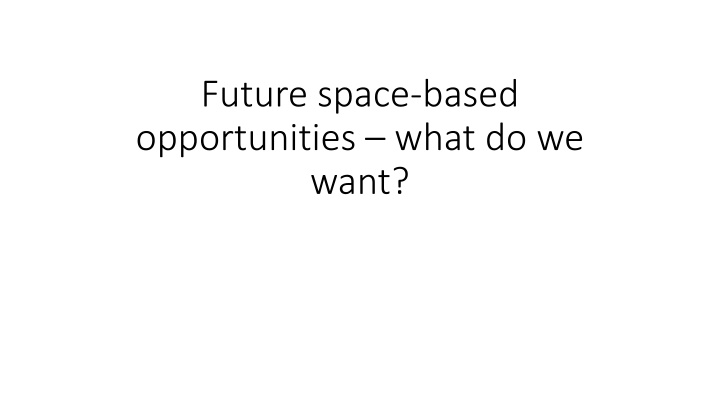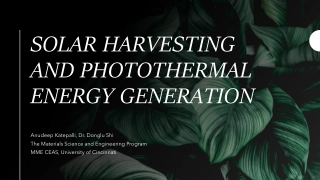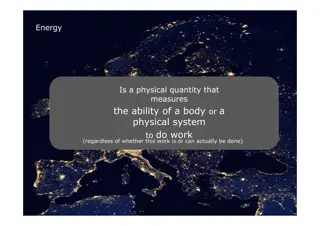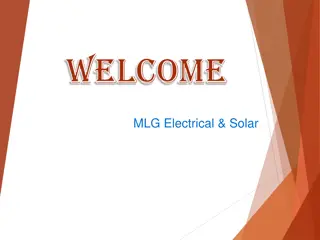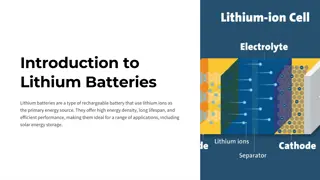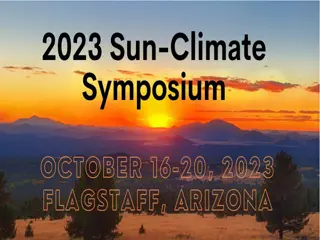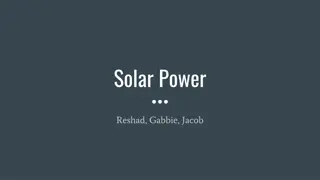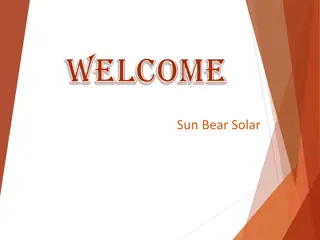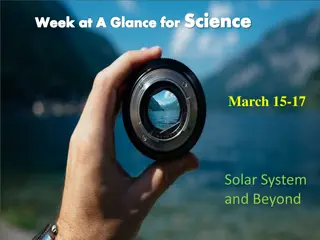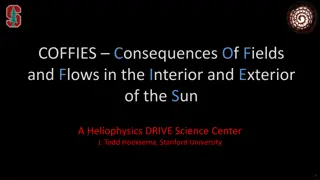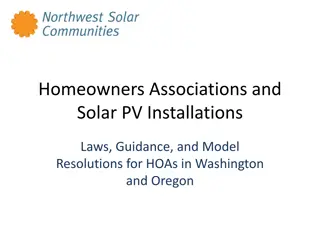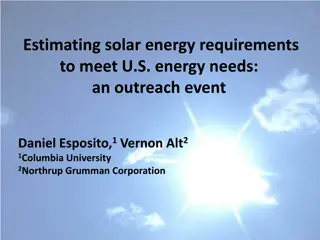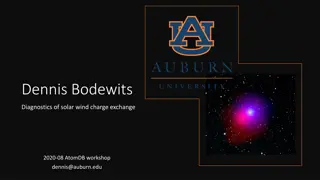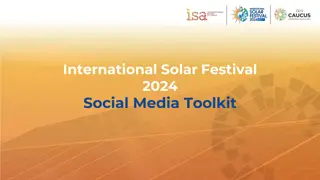Future Space-Based Opportunities: What We Want and Solar System Science Questions
The content discusses future opportunities in space-based missions, current opportunities in the solar system, and solar system science questions posed by STFC. It explores themes such as solar magnetic variability, solar cycle predictability, solar structures, dynamics, energetics, and fundamental processes in the Solar System. The text delves into proposed missions, collaborations, research goals, and technological advancements in the field of space exploration.
Download Presentation

Please find below an Image/Link to download the presentation.
The content on the website is provided AS IS for your information and personal use only. It may not be sold, licensed, or shared on other websites without obtaining consent from the author.If you encounter any issues during the download, it is possible that the publisher has removed the file from their server.
You are allowed to download the files provided on this website for personal or commercial use, subject to the condition that they are used lawfully. All files are the property of their respective owners.
The content on the website is provided AS IS for your information and personal use only. It may not be sold, licensed, or shared on other websites without obtaining consent from the author.
E N D
Presentation Transcript
Future space-based opportunities what do we want?
ESA? Solar Orbiter has been the community s ESA solar mission goal since 1999 In the interim we have had great bi-laterals, notably Hinode, STEREO but that line has been closed for some time. Proposals have been submitted for intervening M-class calls, including various concepts, e.g. Polaris, Solaris, SPARK, SolmeX, HiRISE Nothing was submitted for the F-class call Lagrange operational space weather
Current opportunities (mainly bi-lateral) Solar C EUVST has been selected for further study in Japan France, Germany and Belgium have internal support. UK needs ESA to adopt as an MoO (in current system) NASA PUNCH, Solaris Rocket flights HiC, MaGIXS SULIS entirely UK if a national programme is established? Other ideas?
STFC solar system science questions S1.What are the causes, consequences and predictability of solar magnetic variability and the solar cycle? S1.1 What is the origin of solar magnetic fields? How do they create the variety of observed magnetic structures? S1.2 What causes solar magnetic variability and the solar cycles and how can we predict or forecast this? S1.3 How does the structure, evolution and predictability of solar magnetic fields relate to dynamic phenomena? S2.What are the structures, dynamics and energetics of the Sun? S2.1 What is the nature of the coupling between the solar interior, surface and the atmosphere? S2.2 Why are there solar structures and dynamics on different length scales and time scales, and what process is responsible? S2.3 How, and with what consequences, is magnetic energy transported, stored and released?
U1.What are the fundamental processes at work in the Solar System? U1.1 How do waves behave in inhomogeneous plasmas? U1.2 Why and how do instabilities develop in inhomogeneous plasmas? U1.3 How are magnetic fields generated and how do they evolve? U1.4 What is the nature of turbulence in magnetised plasmas? U1.5 How does magnetic reconnection work? U1.6 What is the nature of cross-scale coupling in plasmas? U1.7 How are energetic particles accelerated? U1.8 How do we know what we are seeing?
What next? Developments in ground-based instrumentation such as IFUs offer new opportunities to do spectroscopy and spectropolarimetry in space. Could they work at UV wavelengths? High percentage of respondents to the recent SSAP consultation cited chromospheric physics as high priority Solar C EUVST will provide new insights, but could novel technologies push the boundaries further? 3D coronal magnetic field along the lines of SULIS?
Discuss Are we happy to reap the rewards of Solar Orbiter for the next 10 years, do what science we can with Lagrange (if it gets through the ministerial), and hope that Solar C EUVST will get adopted as an ESA MoO, or - Do we want to push for M6? Rumours that success in an M-class call needs a response that has backing of the whole European community - need to start working now Volunteers?
